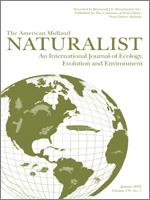Over the past few decades white-tailed deer (Odocoileus virginianus) densities have increased to levels well above their historic range of variability in many parts of the U.S. Under this condition deer can act as a keystone herbivore in forest ecosystems potentially changing the structure, composition, and productivity of many forest types. White-tailed deer herbivory in habitat types other than forests, such as wetlands, is poorly understood. Our objectives were to quantify white-tailed deer herbivory and evaluate if herbivory impacted plant community composition, structure, and productivity within a landscape dominated by a diversity of wetland vegetation types at Shiawassee National Wildlife Refuge during 2011 and 2012. We constructed replicated exclosures in three different wetland vegetation types (two perennial marshes, four moist soil units, and three lakeplain prairies) and compared them with areas open to foraging within core and edge areas of each respective wetland type. We quantified horizontal cover, vertical cover, plant species richness, total above ground biomass, and reproductive biomass in exclosures and open areas during both years. At current low densities (<4 deer/km2 in 2013), white-tailed deer did not impact wetland vegetation characteristics. Mean horizontal cover class was 80–100% in all wetlands. Mean vertical cover was greatest in lakeplain prairies (100%) and lowest in perennial marshes (25%). Species richness was greatest in moist soil units (5.9) and lowest in perennial marshes (1.6). Total above ground biomass production was greatest in perennial marshes (399.3 kg/ha) and lowest in moist soil units (183.3 kg/ha), while reproductive biomass production was greatest in moist soil units (49.2kg/ha) and lowest in lakeplain prairies (29.4 kg/ha). Multivariate analysis with nonmetric multidimensional scaling (NMS) ordination and multi-response permutation procedure (MRPP) analysis yielded no differences in community composition between exclosures and open areas or core and edge areas. Our results will help biologists and ecologists understand herbivory pressures in wetland vegetation types and may assist managers in minimizing community effects of browsing to meet wetland and waterbird conservation goals.
How to translate text using browser tools
1 January 2018
Understanding How a Keystone Herbivore, White-tailed Deer Impacts Wetland Vegetation Types in Southern Michigan
Stephanie Longstaff Hummel,
Henry Campa,
Scott R. Winterstein
ACCESS THE FULL ARTICLE
It is not available for individual sale.
This article is only available to subscribers.
It is not available for individual sale.
It is not available for individual sale.





